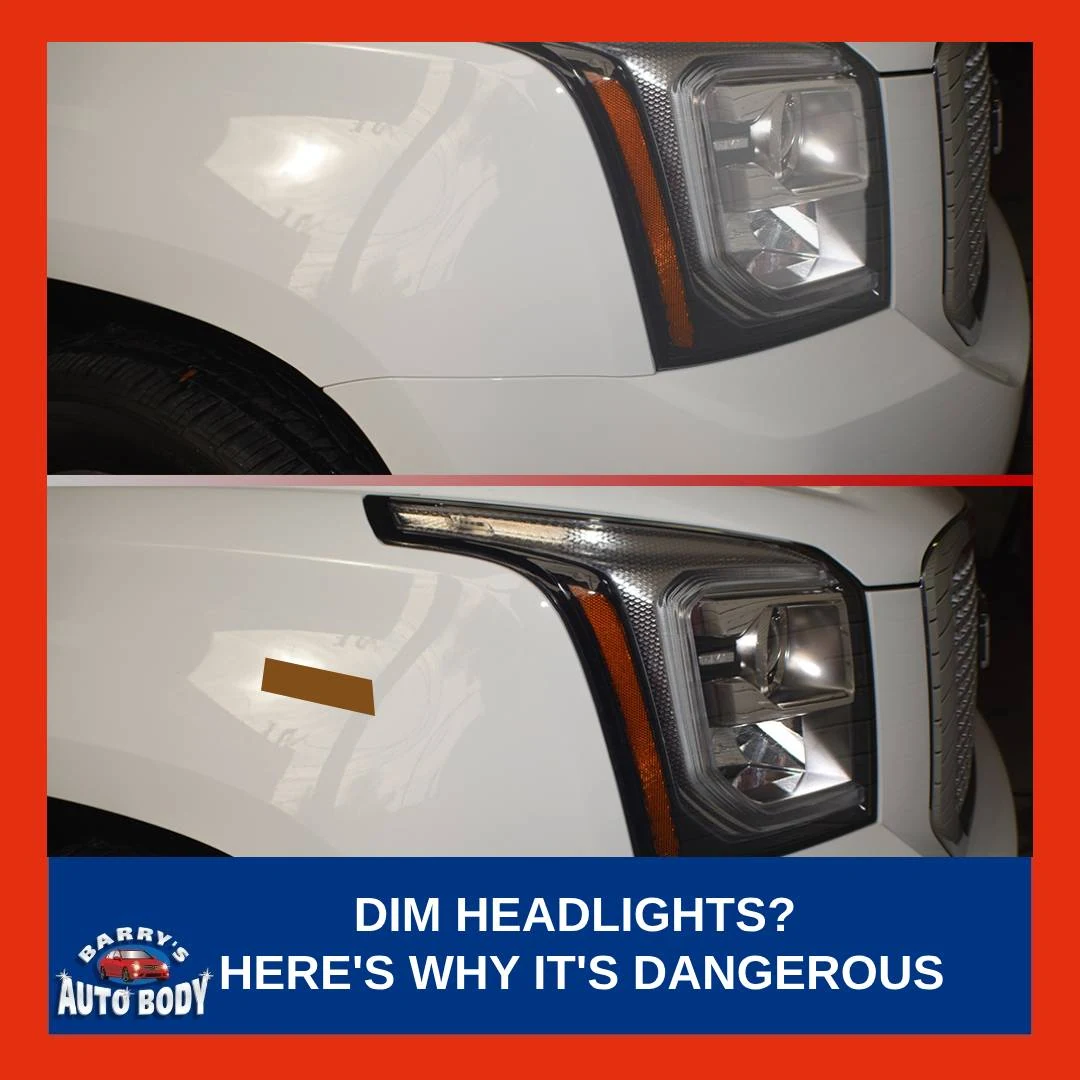Imagine you’re driving at night, and suddenly it feels harder to see the road clearly. Your headlights seem dimmer than usual. While it’s easy to dismiss dim headlights as a mere inconvenience, this issue is far more critical; it significantly affects your safety on the road. Poor lighting reduces visibility, increasing the likelihood of accidents and limiting your reaction time.
In this comprehensive guide, we’ll explore the most common causes of dim headlights, why it’s vital to address this issue promptly, and actionable steps you can take to improve your vehicle’s lighting effectively.
Common Reasons Your Headlights Might Be Dim
Aging or Worn Bulbs
Over time, headlight bulbs naturally lose brightness as they age or become worn.
Common Types of Bulbs Affected:
- Halogen bulbs: Typically, they dim gradually over their lifespan.
- HID (High-Intensity Discharge) bulbs: Can dim or change color as they age.
- LED bulbs: Usually more durable, but might still dim if damaged or improperly installed.
Signs of Aging Bulbs:
- Noticeable reduction in brightness.
- Bulb discoloration.
Actionable Steps:
- Inspect bulbs regularly for clarity and color changes.
- Replace bulbs according to your vehicle manufacturer’s recommended intervals.
- Upgrade to brighter, long-lasting bulbs if frequent replacement becomes a concern.
Foggy or Oxidized Headlight Lenses
Exposure to the sun’s UV rays and debris from the road can cause oxidation or fogging of headlight lenses, significantly reducing brightness.
Typical Causes:
- Prolonged sun exposure.
- Dirt and debris buildup.
- General wear and tear.
Signs of Oxidized Lenses:
- Cloudy, yellowish appearance.
- Reduced visibility during night driving.
Actionable Steps:
- Regularly clean lenses using automotive lens cleaner and microfiber cloths.
- Apply protective coatings or sealants after cleaning to slow future oxidation.
- Consider professional headlight restoration services if DIY methods prove ineffective.
Electrical System Issues
Headlights rely heavily on your vehicle’s electrical system. Issues like weak batteries, failing alternators, or faulty wiring can cause dimming.
Possible Electrical Issues:
- Weak or failing car battery.
- Malfunctioning alternator.
- Corroded or damaged wiring and connections.
Symptoms to Watch:
- The headlights dim noticeably when operating other electrical components.
- Flickering or inconsistent headlight brightness.
- Difficulty starting your vehicle.
Actionable Steps:
- Regularly inspect battery terminals for corrosion and clean if needed.
- Perform periodic checks of your vehicle’s alternator and charging system.
- Seek professional diagnostic services for persistent electrical issues to avoid potential hazards.
Misaligned Headlights
Proper alignment of headlights ensures maximum visibility. Misaligned headlights limit your range of vision and may dazzle oncoming drivers.
Signs of Misalignment:
- Reduced road illumination.
- Other drivers frequently signal that your headlights are bright or misaligned.
Actionable Steps:
- Regularly check headlight alignment by parking facing a flat surface like a wall or garage door to observe beam patterns.
- Adjust headlights according to your vehicle’s user manual.
- Professional realignment services might be a good option if manual adjustments seem complicated or ineffective.
Why Dim Headlights Are a Serious Safety Hazard
Dim headlights drastically affect your ability to see clearly at night or in poor visibility conditions, increasing accident risks significantly.
Safety Concerns Include:
- Reduced visibility range decreases your ability to detect road hazards promptly.
- Increased risk of collisions with pedestrians, animals, or unseen objects.
- Compromised ability to react quickly in emergencies due to limited visibility.
Moreover, driving with inadequate lighting can lead to legal implications, such as citations or penalties.
How to Identify the Cause of Dim Headlights
Diagnosing the specific cause of dim headlights involves simple inspections and checks:
- Visual Inspection: Look closely at bulbs and lenses for discoloration, fogging, or visible damage.
- Electrical Checks: Test your vehicle’s battery voltage and charging system using a multimeter.
- Alignment Testing: Evaluate headlight alignment by observing the beam pattern against a flat surface.
Immediate Steps You Can Take
If you notice dim headlights, take these initial actions promptly:
- Clean headlight lenses thoroughly with recommended cleaning products.
- Inspect bulbs and replace them if they are visibly worn or aging.
- Conduct basic electrical system checks; consult your manual or consider professional assistance if unsure.
- Schedule professional help if quick fixes don’t resolve brightness issues.
Importance of Professional Inspection and Repair
Professional inspections and repairs offer thorough and accurate diagnostics and practical solutions:
- Advanced Diagnostics: Technicians use specialized equipment to pinpoint exact issues quickly.
- Corrective Repairs: Professionals can address complex electrical or alignment issues effectively.
- Safety Assurance: Ensuring optimal visibility and safety, preventing future complications.
Timely professional intervention is highly beneficial in maintaining your vehicle’s safety and overall performance.
Dim headlights are more than a minor annoyance; they significantly compromise safety, increase accident risks, and might lead to costly repairs if ignored. Recognizing early signs and promptly addressing the issue ensures your safety and helps maintain your vehicle’s value and performance.
Don’t risk your safety or those around you. Contact Barry’s Auto Body today to schedule a comprehensive headlight inspection and restore optimal visibility for confident, secure driving.

